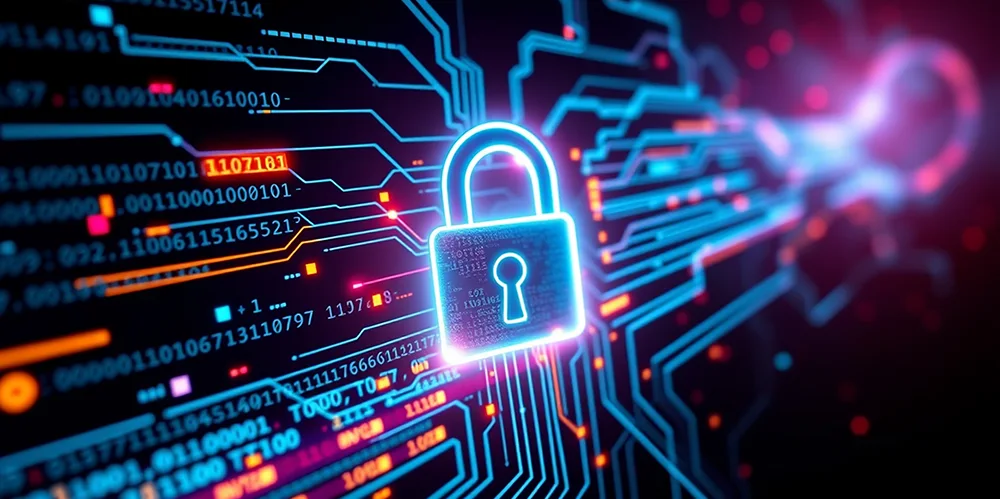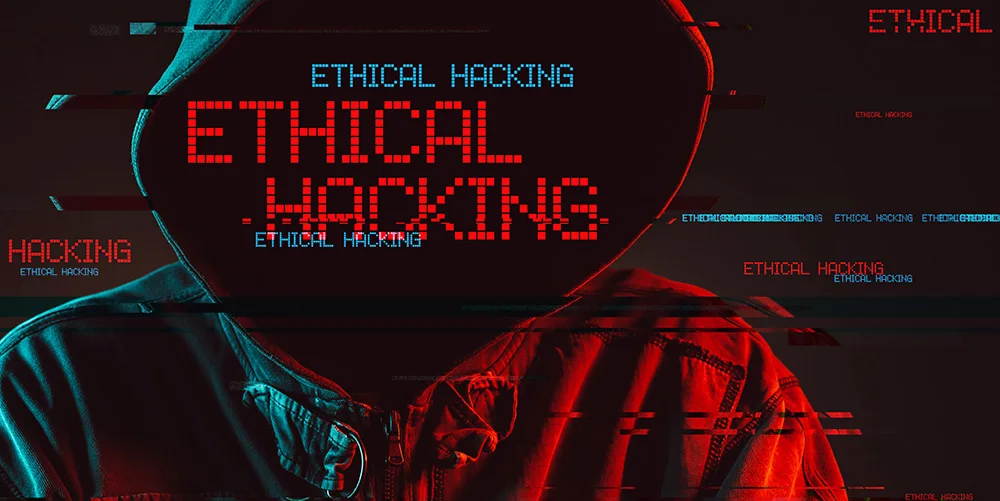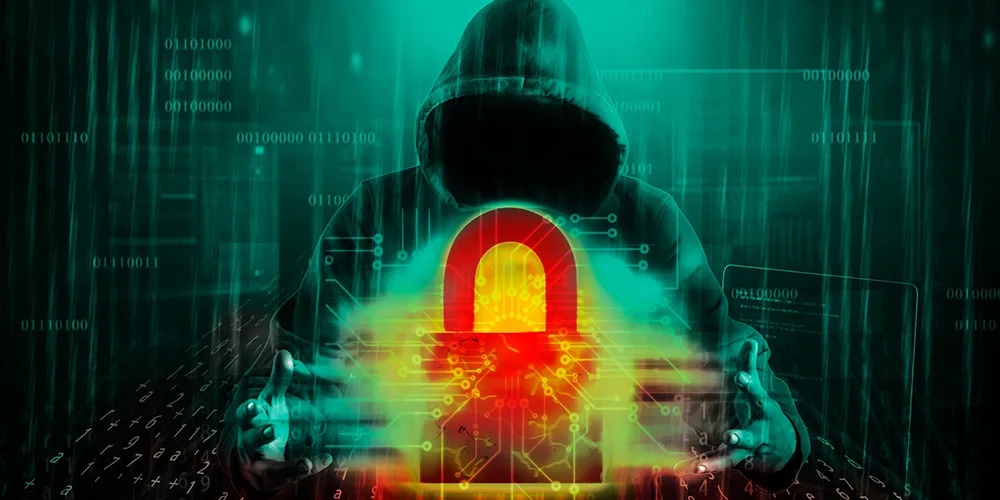What is cyber resilience? A complete guide

Posted on August 18, 2023 by Voke Augoye
Firewalls and anti-virus software are about cybersecurity and that is just the first step in protecting your organisation from cyber threats. You need more than that, however, and this is where cyber resilience comes in. Where little caution is taken when navigating online, it can make workplaces vulnerable to cyberattacks. Instead of entrusting online safety to just your IT partners and company directors, you need to ensure your workforce actively looks to protect themselves from threats too.
What is cyber resilience?
Cyber resilience is the ability to bounce back and recover from a cyber-attack. This starts with a culture within the workplace that actively seeks to protect itself from cyber threats. With training and awareness, alongside active conversation about cybersecurity threats, it’s possible to adopt a cyber-resilient culture. Any company can be victimised by cybercrime, meaning your employees, colleagues and business partners can be too. Cyber resilience will help to safeguard your workplace, and all data, against potential harm.
Companies with a comprehensive approach to cyber resilience will be better defended when cybersecurity-related issues occur. Phishing attacks, breaches of data and financial scams are all things you hope to avoid on a regular basis. Unfortunately, infiltrations can happen at any time to anyone. When measuring levels of resilience, you must first acknowledge whether everyone who works within the company is aware of these attacks and knows how they should react when they spot something suspicious.
How important is cyber resilience?
Establishing cyber resilience within the workplace is vital. As well as offering an extra layer of protection around IT and device security, it also increases awareness and conversation about potential threats. When business reputation, customer data and even annual turnover are on the line, a successful cyber-attack can be devastating.
Enforcing a proactive response to cyber threats within your organisation is priceless. Since the introduction of the General Data Protection Regulations (GDPR) in 2018 in Europe, companies can expect to receive a maximum fine of €20 million, or 4% of their annual turnover, if they fail to comply. In addition, post-Brexit, the UK GDPR and DPA 2018 set a maximum fine of £17.5 million or 4% of annual global turnover – whichever is greater – for infringements. Unsuitable data protection measures can be a costly mistake.
When it comes to cybersecurity, you shouldn’t have to compromise. Having your data stolen or experiencing ransomware attacks can also have huge financial implications. In June 2017, over 17,000 machines were affected by Petya/Not Petya malware. The total cost to restore equipment and mediate damage control came to approximately $10 billion. Organisations that have been affected by security breaches may also experience brand damage, which has negative implications for businesses.
As well as potentially preventing hefty fines and extortionate costs, cyber resilience can also act as peace of mind for both the organisation and the people within it. Where cyber security training and a reactive response are embedded into a company’s culture, identifying possible threats becomes second nature. Placing data security responsibility into the hands of everyone will make employees more alert and cautious when dealing with highly sensitive information, increasing the cyber resilience level of the organisation.
Benefits of cyber resilience

When every member of your organisation takes responsibility for their approach to cybersecurity, this is known as the human firewall. Similarly, to a firewall being active on your electronic devices, the human firewall is a mindset attained by every person within the business. Creating a resilient human firewall will significantly boost awareness around cyber-attacks and evolving cyber threats, contributing to a cyber-resilient organisation. Being cyber-resilient is critical for many reasons.
Invaluable cybersecurity mindset
With cybersecurity at the forefront of everyone’s minds, it will inevitably prove invaluable. Through word of mouth and cybersecurity awareness training, employees will subconsciously practise prevention when navigating online or dealing with high-value data. In particular, the protection of confidential information will be strengthened. When dealing with highly sensitive data, or a company’s trade secrets, greater precaution will be taken when disclosing information to another. Appropriate preventative measures, such as encryption or password protection, are all available to an employee if they know how to use them, which solidifies the need for accurate cybersecurity training. With the right tools in place, it can be maintained amongst your workforce.
Cyberattack preparedness
Cybercriminals devise attacks for illegal financial gain, which means that if your security situation is vulnerable, your organisation will be an easy target. While financial implications are certain, cybercriminals can also have other motives when targeting businesses or organisations. This could mean a detrimental public and market perception of your organisation.
Waiting for cybercriminals to focus their attention elsewhere cannot be an option for your company. Similarly, relying on an IT department or the more technologically savvy individuals within your internal teams to spot threats will not work. As anyone can be affected, it’s important to have cyber resilience as a collective mindset. Without consideration, resilient organisations will actively train and prepare their workforces to take preventative measures, ensuring all employees can access and use the tools needed.
Flexible strategy
Similar to the security patches routinely released on your phone, cybersecurity must continuously change in order to align with the latest cyber-attacks. Not only does this need to happen from an anti-virus software perspective, but it needs to occur within your human firewall too.
Up-to-date training and continuing to report suspicious activity are all ways that can ensure the health and safety of your online data. Over 90% of cybersecurity breaches involve human error, which is why enabling your workforce with appropriate tools will aid your defence against possible threats.
Protects cybersecurity victims
For any corporation, the ultimate goal is to make money and turn a profit. However, you need several key components to make this happen, and your approach to cybersecurity should not be one of the last factors. It should be highly ranked. It is important to ensure everyone within your organisation understands the risks of data handling and adopts processes to protect themselves when doing so.
Failing to secure your data and highly confidential information is incredibly costly. The inability to invest in appropriate security might also severely impact your brand’s reputation and trust among your customer base. After suffering an attack, it might also cause your customers and employees to feel vulnerable. The damage, after being targeted, could be catastrophic.
Holistic approach
Deflecting a cyber-attack is not exclusively for your anti-virus software to deal with. In 2021, cyber-attacks were experienced by 65% of medium-sized businesses. Additionally, a quarter of charities were also targeted. Contrary to popular belief, you do not need to be a business or a charity to become a victim of cybercrime.
With all considerations, alertness around scams, phishing attacks and the danger of ransomware is not reserved solely for the tech-savvy individuals within your business. It’s worth identifying where you are on your journey to cyber resilience and the actions you need to take to achieve it.
Building cyber resilience within your business

Every business is on a journey to cyber resilience; it’s important to know where you stand and what you need to achieve. Here are some things to consider for your organisation:
Cybersecurity training for all
Knowledge is power. Without the tools to cope with potential breaches, it’s possible that even more damage can be inflicted. Many businesses fall short by supplying inadequate training causing them to be profitable targets for cybercriminals.
Training is great, but make sure to reinforce it
Cybersecurity training should not be used as a tick-box exercise when onboarding new starters. Quick training every 6 months will not be enough to equip your staff with the relevant knowledge. As the nature of cyber-attacks changes so frequently, it’s important to refresh all employees regularly. Retaining information and remembering procedures can take some time to fully absorb, so it’s best to keep practising.
Expose your staff to controlled scenarios
Bosses, directors, and business owners are most likely to be targeted, or impersonated, for phishing email scams. A great exercise is to create live scenarios where fake phishing emails are distributed to all employees. As well as strengthening the understanding of phishing emails, you will be reinforcing any training you have conducted. In a controlled environment, you will identify if any employees are engaging with the emails, and this will also assist in knowing if your training has been effective or if further training is required.
Keep an eye out for new threats and communicate them
As the market for cyber-attacks is constantly evolving, newly developed risks will start to appear over time. Encouraging a culture of reporting and identifying potential threats will help all parties remain vigilant. Human error is often the reason behind data breaches; if threats aren’t discussed it’s likely that they aren’t on the radar of your staff.
Adopt a human firewall and cyber-resilient culture
Let your staff know that it is okay to question and challenge anything they might deem to be suspicious, even if it’s harmless. The key to enforcing a safe working environment is communication, and the freedom to spot and report hazards should rank highly. Embedding training for everyone, from new starters to long-service employees, is vital to creating cyber resilience within your working environment.
Go for bronze, silver or gold
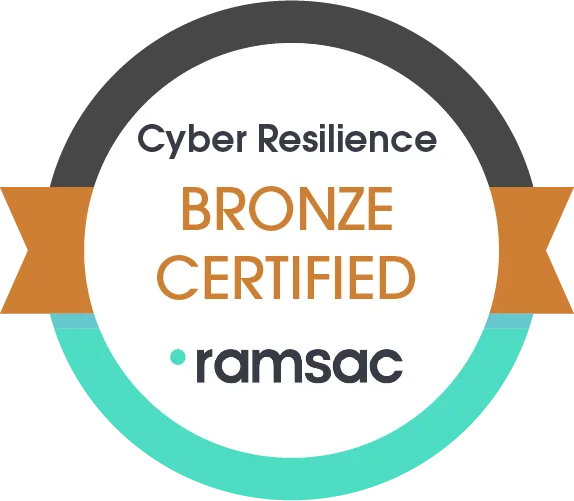
Bronze tier of Cyber Resilience Certification
The Silver certification represents great cyber resilience, reflecting practices that protect both end-user devices, IT hardware and cloud-stored data.
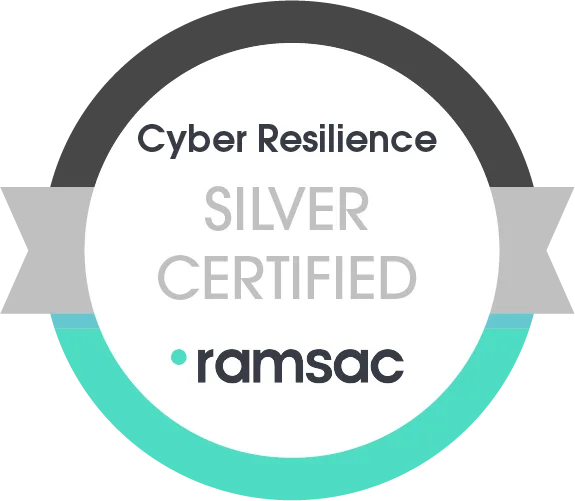
Silver tier of Cyber Resilience Certification
The Silver certification represents great cyber resilience, reflecting practices that protect both end-user devices, IT hardware and cloud-stored data.
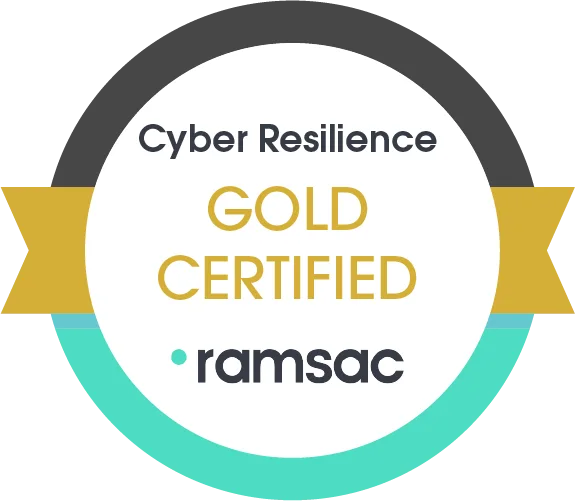
Gold tier of Cyber Resilience Certification
The highest level of certification available demonstrates that a business is following the best cybersecurity practices. This requires an extremely high standard of cybersecurity, ensuring that all angles have been covered from the bottom to the very top of a business.
Secure your business with Cyber Resilience Certification from ramsac today
Whether you’re at the beginning of your cyber resilience journey or ahead of the curve, ramsac are here to help. Get in touch today to secure your Cyber Resilience Certification or download our factsheet.


